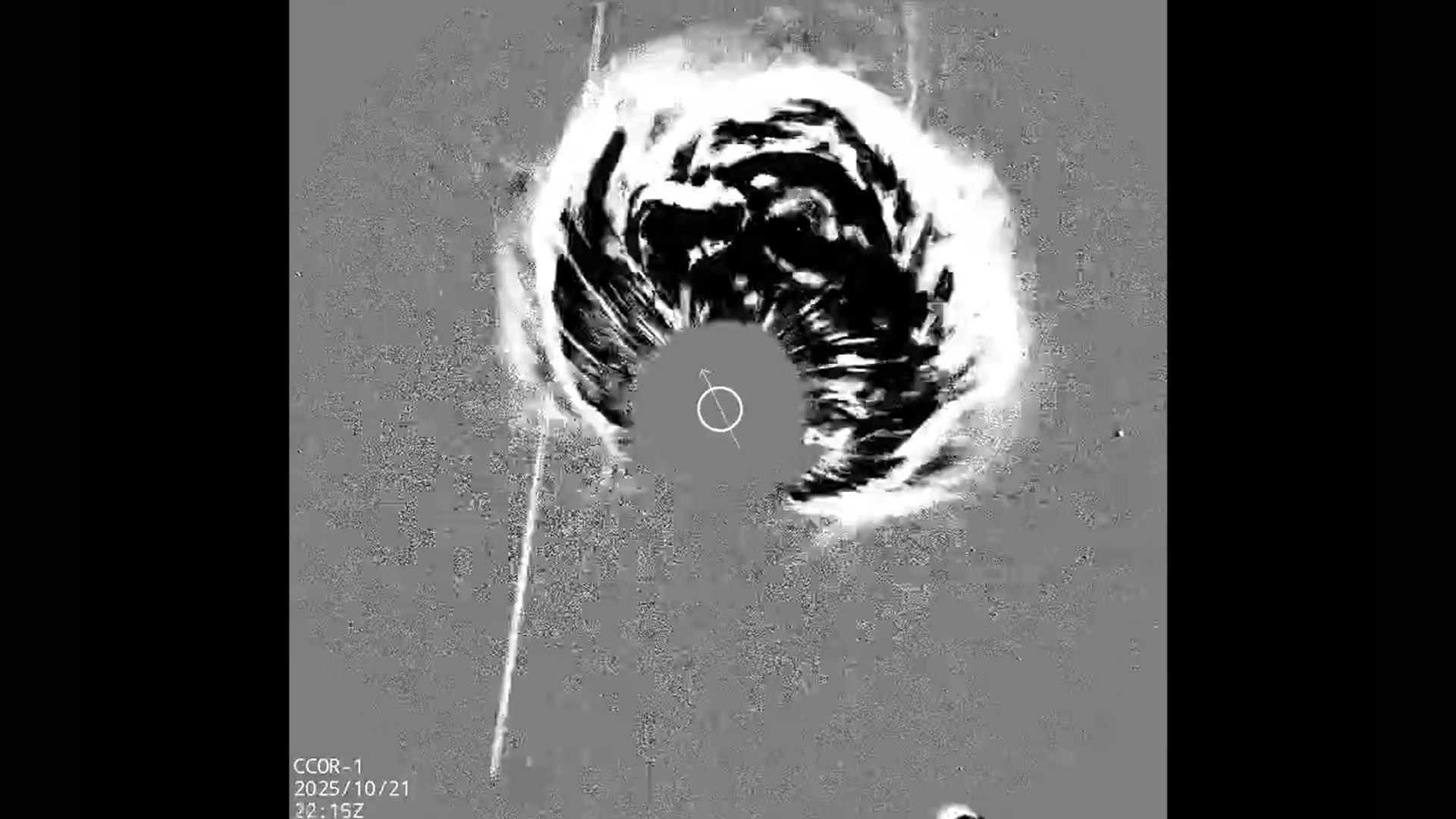Sun's far side erupts in satellite image | Space photo of the day for Oct. 29, 2025
NOAA's CCOR-1 coronagraph captured the blast that showed the sun's raw power in action.

Late on Oct. 21, 2025, a spectacular coronal mass ejection (CME) erupted from the far side of the sun, an area currently dominated by the powerful and persistent Active Region 4246. The eruption occurred just after the active region had rotated beyond the sun's western limb, out of direct view from Earth and the weather satellites that monitor solar activity.
What is it?
CMEs are among the most awe-inspiring explosions in the solar system. These vast eruptions hurl immense clouds of magnetized plasma from the sun's corona into interplanetary space, sometimes at millions of miles per hour.
Yet many of these powerful outbursts occur where we can't see them directly, on the far side of the sun, hidden from Earth's telescopes. These events still shape the solar wind environment that later sweeps past our planet or impacts other worlds, such as Venus and Mars.
That's where the Compact Coronagraph (CCOR-1) instrument aboard NOAA's GOES-19 weather satellite comes in. CCOR-1 blocks the sun's bright disk to capture faint white-light structures in the outer corona, tracking CMEs as they expand into space.
Where is it?
The CCOR-1 on NOAA's GOES-19 satellite orbits around 22,000 miles (36,000 kilometers) above Earth's equator.
Why is it amazing?
When aimed toward Earth, these sorts of eruptions can set off brilliant auroras, disrupt satellites and disturb power systems. Although no direct effects were felt on Earth with this particular CME, the event showed how powerful our sun can truly be.
CCOR-1's imagery offered a glimpse of "the storm we missed," one that, if rotated just a few days earlier, could have driven a major geomagnetic disturbance.
Breaking space news, the latest updates on rocket launches, skywatching events and more!
Want to learn more?
You can learn more about the solar cycle and weather satellites.
Kenna Hughes-Castleberry is the Content Manager at Space.com. Formerly, she was the Science Communicator at JILA, a physics research institute. Kenna is also a freelance science journalist. Her beats include quantum technology, AI, animal intelligence, corvids, and cephalopods.
You must confirm your public display name before commenting
Please logout and then login again, you will then be prompted to enter your display name.

